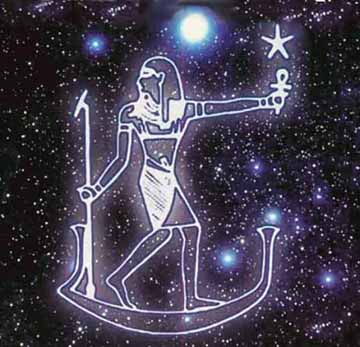They believed stars were Gods...
Ancient Egyptian Astronomy

Egyptian culture was greatly influenced by astronomy. Ancient Egyptian astronomy was very sacred. Pyramids and temples had been built and positioned in relation to the the stars. The Egyptian calendar was based on astronomical indicators as well.
For example, when the brightest star in our sky, Sirius, rose before the Sun, the Egyptians knew their annual flood was going to occur.
Star-Structures
Various tools were used when planning the design and placement of a pyramid or temple. One of these tools was called "merkhet," which meant indicator. This was a small wooden plank with a hole at one end. Ancient astronomers would look through the hole and angle the device until their target star was aligned accurately.
Calendar of the Cosmos
The Nile River flooded every year at the same time, when Sirius rose before the Sun on the morning of the summer solstice. This event was marked as day 1 of their calendar year. The Egyptian calendar had 365 days and 12 months, with 30 days in each month, and 5 "feast days" at the end of each year.
Astronomy & Religion
Ancient Egyptian astronomy was a religious tradition. The Egyptians had no true understanding of the universe, so many myths were created as an explanation for astronomical events. To them, each star was some form of God or Goddess, or part of one.
The sun was represented by multiple Gods. When the sun rose in the morning it was known as Horus, the reborn child of Osiris and Isis, God and Goddess of the afterlife. The hot, mid-day sun was known as the much more powerful sun God, Ra. And the evening sun was the creator God, Atum, the "finisher of the world" who put to rest all other sun Gods, then died each day at sunset.
Return to Astro History and learn about other cultures!
|




